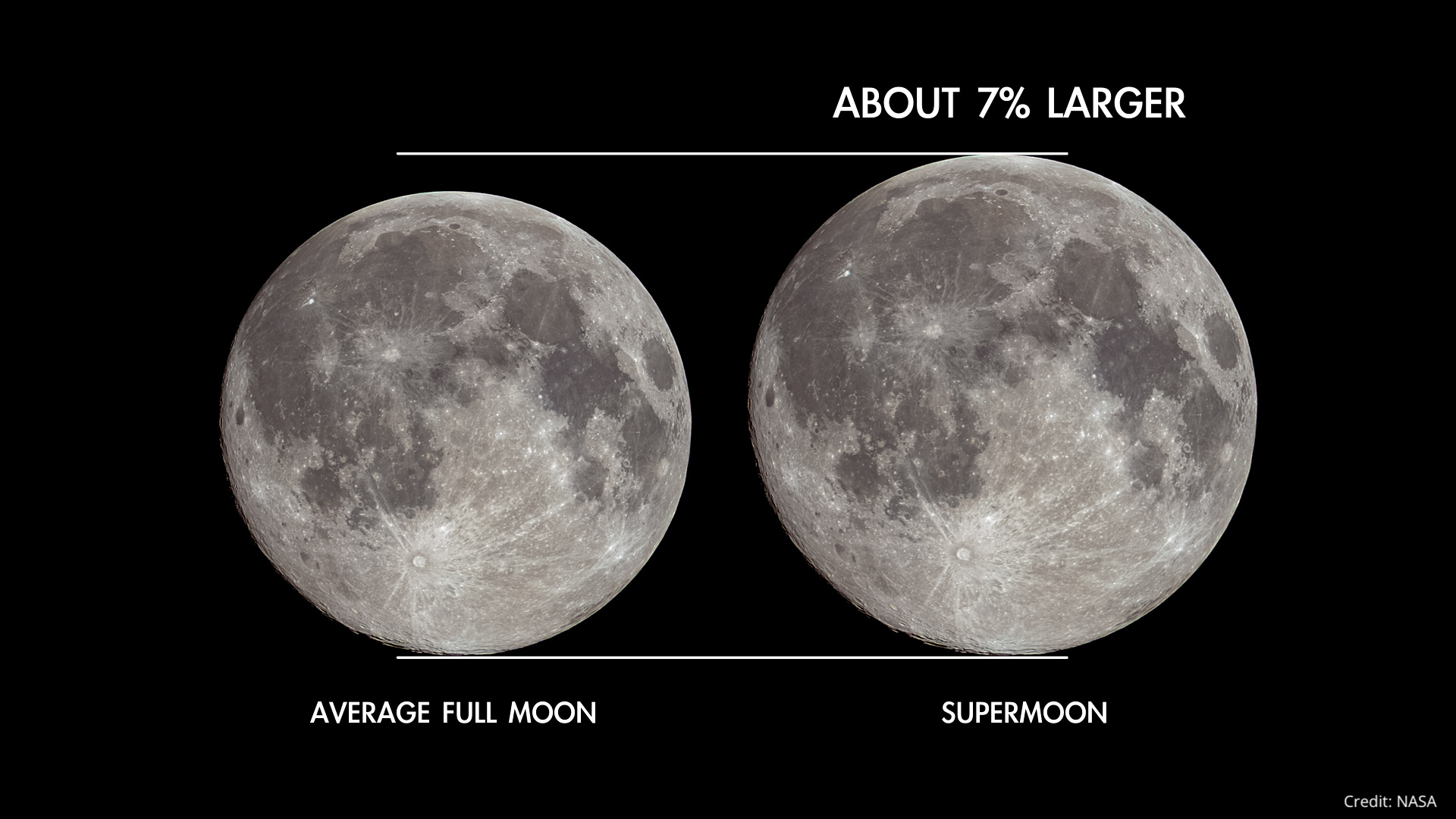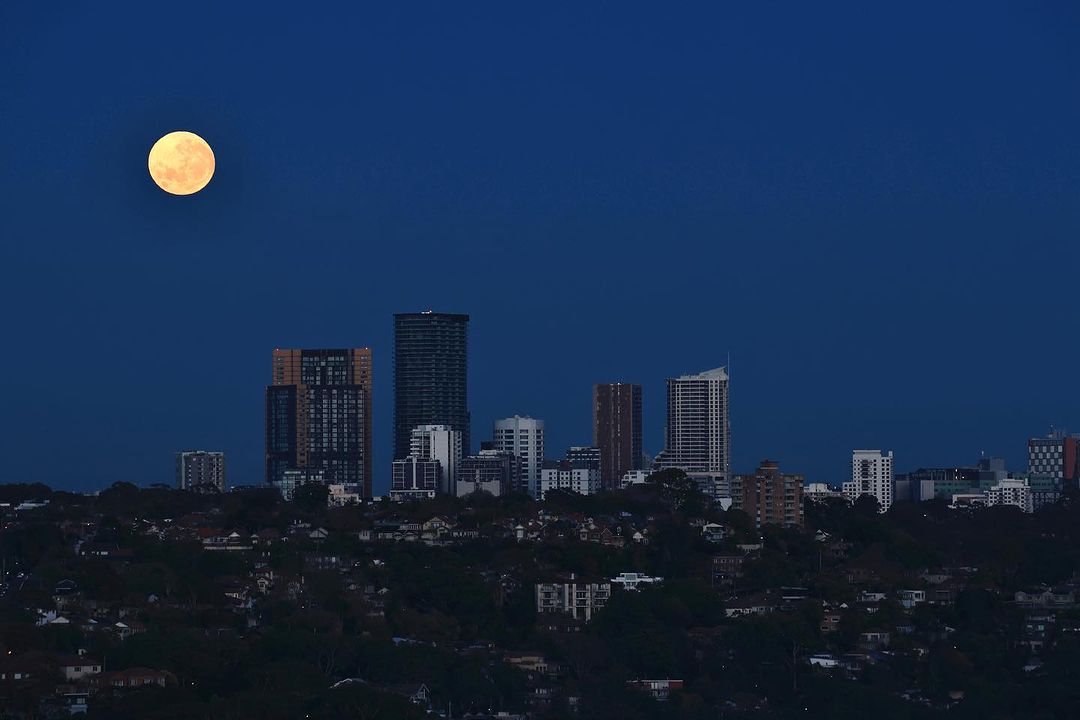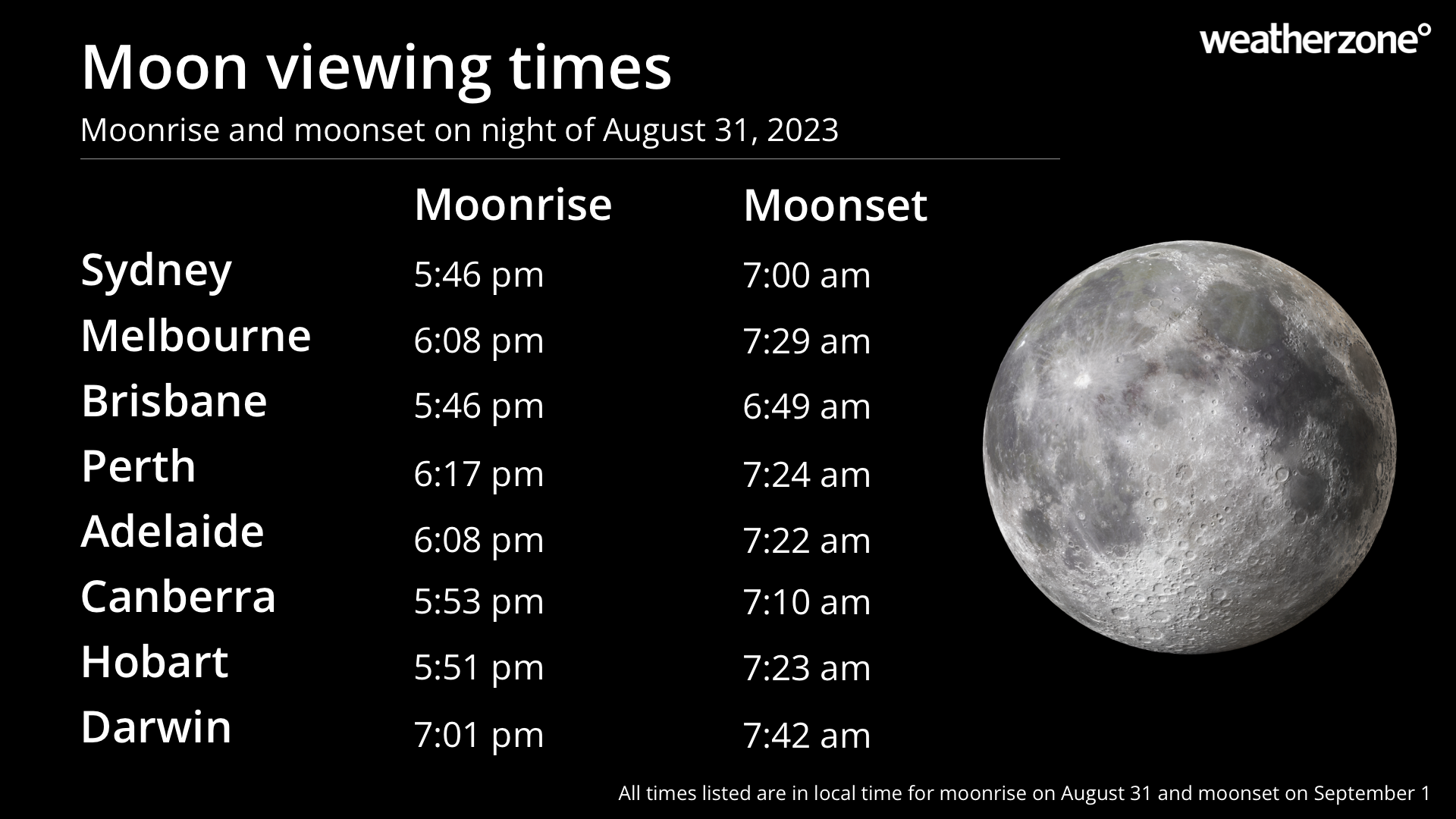'Super blue moon' dazzles Australian skies
If you missed last night’s impressive moon, don’t worry, you have another chance to see the super blue moon tonight.
The moon is looking large in the sky above Australia at the moment thanks to a blue moon and a supermoon happening at the same.
A ‘blue moon’ refers to a full moon that occurs after another full moon in the same calendar month. This happens roughly once every 2 to 3 years, on average. Despite the name, the moon doesn’t actually turn blue during a typical blue moon.
A ‘supermoon’ happens when a full or new moon occurs while the moon is near its closest approach to Earth during its elliptical orbit. Supermoons can appear around 7% larger than a regular full moon and 14% larger than a micromoon. Supermoons are also a bit brighter than their smaller counterparts.

Image: An average full moon compared to a supermoon. Source: NASA
This month’s second full moon, the blue moon, occurred at 11:35am AEST on Thursday, August 31. This coincides with a supermoon, making it a ‘super blue moon’, a pairing that only happens around once per decade, on average.
Skywatchers that were lucky enough to have some clear sky above them on Wednesday night caught a glimpse of this rare lunar spectacle.

Image: Wednesday’s night’s rising moon seen from Crows Nest in Sydney. Source: @ihaig72sydney / Instagram
The moon will look just as impressive on Thursday night was well, especially when the moon is near the horizon. Below are the moonrise times for Australia’s capital cities on Thursday night.

The good news about this month’s super blue moon is that you can watch it safely without any eye protection, and you don’t need a telescope or binoculars. All you need is clear sky.
Unfortunately, parts of southern and eastern Australia will be cloudy on Thursday night.
The animation below shows the cloud cover observed by the Himawari-9 satellite on Thursday afternoon up to 3:30pm AEST.

Some of the cloud in the animation above is causing thunderstorms in eastern NSW and southeast Qld. So, be sure to check for lightning and severe storm warnings before heading out to see the moon tonight.